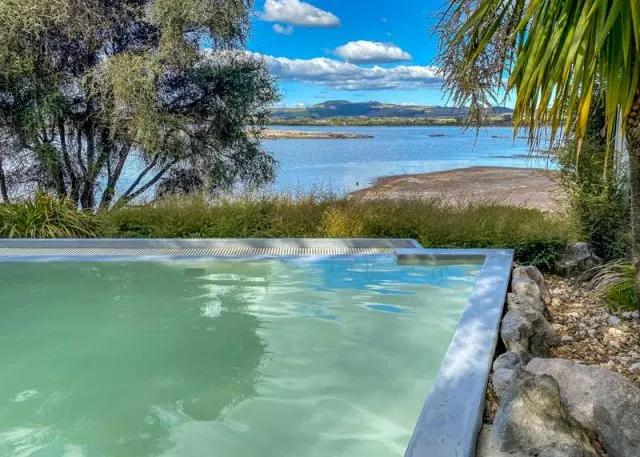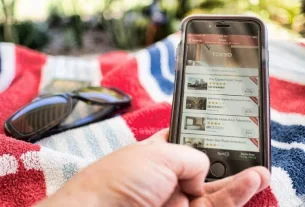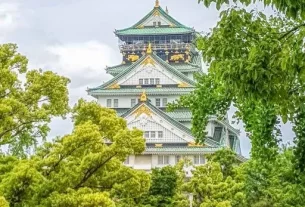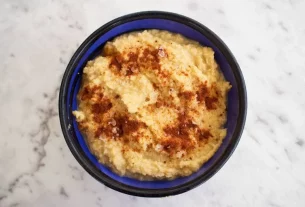After a few days hiking, kayaking, exploring caves and being wowed by the geothermal landscape, an afternoon soaking in the hot springs at the Polynesian Spa in Rotorua was exactly what we wanted and needed.

I’m a long term fan of hot springs and spa treatments. We travel in Japan regularly and I’m always trying to wrangle an extra onsen soak onto the itinerary when we’re there. Hakone and Nikko both offer excellent hot spring options if you are headed that way.
New Zealand is also a geothermal country and that means there are quite a few hot spring areas scattered around in both the north and south islands but you’ll find the most intense geographic concentration of these located between Rotorua and Taupo.

In March we were in New Zealand and decided to hire a car for a few days and take a road trip down through the middle of the north island with a couple of days in Rotorua.
Our timing wasn’t ideal with the looming international health crisis and a cyclone offshore cancelling our kayaking trip on Lake Rotoiti. The kayak trip on the lake was one of the key reasons for the road trip but the positive turned out to be that we got to spend some time soaking in the gorgeous and soothing, waters of the Polynesian Spa.
Table of Contents
A history of healing hot pools in Rotorua
Thermal bathing for health dates back 1000’s of years in various cultures but has gone in and out of popularity and medical acceptance.
In the 18th and early 19th century in Europe hot pools were at their peak of popularity for both social use and their health benefits. It was during this period that the reputation of Rotorua’s hot springs gained attention across the world. In 1878, a Roman Catholic priest, Father Mahoney travelled around 60 km from Tauranga to Rotorua hoping to manage his disabling arthritis.
The story has it that not only did soaking in the small hand-dug pool help him manage the pain and loss of movement caused by the condition but that he walked all the way back to Tauranga! To be honest it might have been a better idea to just get a transfer to a local parish.
The pool he soaked in was located roughly where the Polynesian Spa stands today right on the edge of the lake and was fed by a hot spring the local Maori knew as Te Pupūnitanga. It later also became known as the ‘Priest Spring‘ after Father Mahoney.

From 1908 water was piped from the Priest Spring to the Tudor styled therapeutic bathhouse located in what is now the Rotorua Museum building. The bathhouse had 2 wings which were segregated one for men and one for women and at its peak as many as 80,000 remedial bath treatments were taken a year. Quite an astronomical number when many of those patients were travelling from Europe by ship.
Our Polynesian Spa Experience
We lived in New Zealand until about 12 years ago so we are no strangers to Rotorua and the Polynesian Spa, we’ve been here a few times but it had been a long time between dips. We weren’t sure what to expect this time but there was no way we could stay just down the road and not head across for a soak.

The complex has been significantly extended and modernised since we were last there with a good range of options for different experiences and price points. As a couple, our focus was on the adult-focused relaxing and healing pools but if you are travelling as a family there are options to suit you too.
Find full information on pools and tickets on the Polynesian Spa official page.
Private pools
We started out with a 30 minutes soak in a private pool. There are several of these available but it pays to book in advance especially if you want the experience of one of the four lake-view deluxe pools that look out onto the shores of Lake Rotorua.
From the reception, you head to the right-hand side and walk through the Pavillion pools area. This is the older part of the complex and includes pools fed from both the acidic and alkaline springs at various temperatures. These pools are open to the lake and the area is adult only. You can use these pools for as long as you’d like after your private pool experience, this is included in the ticket price.

There is a second reception area for the private pools. You are given towels when you arrive and there is a small bench area to change just inside the door or each pool room. There is also a shower to rinse off before getting dressed.
These pools are kept at 38.5° C which is a comfortable temperature for relaxing in, it doesn’t feel scorching on the skin or difficult to enter the pool but you’ll probably find your skin is slightly reddened with increased blood flow by the time you get out.
At the end of your session a warning light comes on above the changing area so you don’t need to keep an eye on the time and you then have a reasonable time to rinse off in the shower and get dried and dressed.
In our case, we were planning to spend the rest of the afternoon around the spa so we just towelled off to make sure we weren’t dripping everywhere and continued on to find our next pool.
Deluxe Lake Spa Pools
You can stay on in the Pavillion Pool area if you want to and there are public changing rooms and places to leave your gear here but we had booked tickets for the deluxe lake spa area.
You have a wrist band as your ticket for this area and you have to exit and re-enter through the left-hand side of the reception desk. There is a lounge area through here where you could wait if you were having treatments done or just to relax indoors before or after your time in the pools.
The changing rooms in this part were very good. There are plenty of free lockers of various sizes so you will find one to fit your gear, just lock it and slip the key on a waterproof band around your wrist. You can also grab a clean towel from the shelves and drop it back in the baskets here.

When you are done there are showers with soap and shampoo, some are communal but others have a door for privacy. There are also hairdryers, large mirrors for applying any makeup or skincare you want to and body lotion to rehydrate your skin.
Out in the pool area there are 4 large hot pools. The 3 fed by the Rachel spring are rock pools of varying depths, 2 have lake frontage and the third has a manmade cave over part of the pool. The Priest spring-fed pool is a large rectangular pool with seating around the sides, it’s slightly milky in colour compared to the others, presumably due to the different minerals in the water.

There are both acid and alkaline pools in this area kept around 38-39°C. The pools are shallow, suited for adults to sit and relax up to their shoulders in the water or on the edge. There are also recliners overlooking the lake available for relaxing out of the water.

Aix Massage
Our trip was so tightly scheduled that it didn’t include an Aix massage this time. We have both had the treatment at the Polynesian Spa before and highly recommend it. I have to admit feeling a little disappointed as we drove out of Rotorua without having managed to fit it in.
Aix massage was a treatment originally offered in Rotorua at the bathhouse in the early 1900s. While today’s version borrows from those basics it’s a far more luxe and relaxing experience.
The treatment lasts an hour and like the rest of the complex, it is very professional. The Italian Vichy massage bed is a bit different to what you might be used to at other spas with water jets positioned from above.
You start with a dry exfoliation scrub treatment then the therapist will begin the massage treatment with the Vichy shower jets. It’s very relaxing and while they don’t do deep tissue work you can request how firm you like your massage.
Family fun options
The pools we book are more suited to solitude or couples experiences, they are quiet and relaxing spaces where you can move between acidity and alkalinity, or various temperatures to find what is soothing and comfortable for your personal taste.
If you are after an option for the young family to enjoy together you’ll find that at the Polynesian Spa too. The family pools area has discounted pricing for children and 3 hot pools. Two of the pools are alkaline fed from the Rachel Spring and the third is freshwater. This is the space for swimming, splashing and laughing. There’s a small slide here too for the younger children.
Families are able to purchase tickets to the other pool areas including the deluxe pools but all tickets are at adult pricing. These other areas are quiet zones and children must be directly supervised at all times.
Acidic and Alkaline Pools
The Polynesian Spa is quite special in that it is fed by two quite separate springs, one provides alkaline and the other acidic waters and you can select your treatment by which pools you use.

Soaking in hot water generally helps blood circulate and the ability of cells to carry oxygen which can be supportive of the body’s digestive and detoxification processes.
As mentioned above the Priest Spring is slightly acidic and that is useful in the treatment of aches, pains and tired muscles. The Rachel Spring is alkaline, its sodium silicate cleanses and nourishes the skin.
So do I believe in the healing power of hot springs?
If you’d asked me a few decades ago when we first visited, I would have raved about the blissed-out relaxation but I’d have had less context on the difference between the individual pools or the mineral composition of different springs.
Before I do discuss my personal experience I would say that immersion in hot water can be dangerous for some people with particular medical conditions. If that is you, please check with your medical advisor for advice on your personal circumstances.
My personal observation with moderate auto-immune arthritis is that while in the water I am substantially pain-free, that is helped by both the heat and support that being in water gives the joints.
An hour after leaving the pool the inflammation and visible swelling around joints are significantly reduced. The reduction in pain can last up to 48 hours, I also sleep like I haven’t in years. For my situation, I find hot springs to be very effective at short to medium term pain management with no negative side effects.
Beyond aches and pain, the hot water also has a fairly undisputed effect on stress levels and improved sleep. While it’s a treatment not a cure I can say for absolute certain I’d be buying the annual pass if I lived nearby.
If you found this article useful please consider saving it to Pinterest. It makes it easy for you to find it again, it helps us, and it helps other travellers to find the information they are looking for.
We were hosted by the Polynesian Spa on our most recent visit. As with all content on the site, it reflects our personal experience & opinions.



